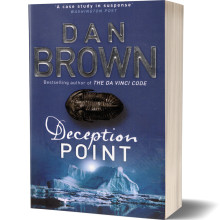About the Book
From its first publication in 1816 Rob Roy has been recognised as containing some of Scott’s finest writing and most engaging, fully realised characters. The outlaw Rob Roy MacGregor was already a legendary, disputed figure by the time Scott wrote – a heroic Scottish Robin Hood to some, an over-glamorised, unprincipled predator to others.
Scott approaches Rob Roy indirectly, through the adventures of his fictional hero, Frank Osbaldistone, amid the political turmoil of England and Scotland in 1715. With characteristic care Scott reconstructs the period and settings so as to place Rob Roy and the Scotland he inhabits amid conflicting moral, economic and historical forces.
This edition features, besides a new critical introduction and extensive explanatory notes, an essay outlining clearly the novel’s historical context and a glossary of Scottish words and phrases used by Scott’s colourful, vernacular characters.
About the Author
Sir Walter Scott
Sir Walter Scott (1771 – 1832) was a Scottish novelist, playwright and poet. He is notable for being the first British author that gained an international reputation during his lifetime. Although the romanticism of his historic fiction later fell out of favour with critics, his major novels, such as 'Rob Roy' and 'Ivanhoe', are acknowledged as classic works of literature.
Walter Scott (1771 – 1832) was one of the most popular and widely read writers of the nineteenth century and left behind a rich body of full-blooded yarns of adventure, darkness and passion, mainly set in his native Scotland. He was born in the Old Town of Edinburgh and survived a childhood bout of polio that left him lame. To cure his lameness he was sent in 1773 to live in the rural Scottish Borders at his paternal grandparents’ farm. Here he was taught to read by his Aunt Jenny and learned from her the speech patterns and many of the tales and legends that characterised much of his work. His explorations of the neighbouring countryside developed in him both a love of natural beauty and a deep appreciation of the historic struggles of his Scottish forebears, which often formed the backdrop to the plots of a large number of his novels.
He attended the famed Edinburgh High School, and then followed in his father’s wake by taking a law degree at Edinburgh University, being called to the Bar in 1792. At the age of twenty-five, he began writing, first translating works from German and then moving on to poetry. Five years later, he published a three-volume set of collected Scottish ballads, The Minstrelsy of the Scottish Borders. This was an early indicator of his interest in Scotland and history from a literary standpoint.
His first novel, Waverley (1814), was published anonymously. There is no clear single reason why Scott wished to remain anonymous, but a number of factors contributed to his decision. Firstly, the novel was not considered a serious genre at the time, especially in comparison with the sort of narrative verse that Scott had hitherto published. Secondly, writing fiction would not have been regarded as a decorous pastime for a Clerk of the Session. Finally, Scott viewed the publication of Waverley as an experiment upon public taste and wished to protect his reputation should the book fail. As time went on, though, and the Waverley Novels became ever more popular, Scott’s anonymity undoubtedly also appealed to his taste for romance and mystery.
His publishers persuaded him to allow further novels to be designated as ‘by the author of Waverley,’ and for this reason, some of his books were called the ‘Waverley Novels.’ Although he published biographies of Swift and Dryden and some history, as well as poems, his chief claim to distinction is his contribution to Romanticism and the historical novel.
Following the astonishing success of Waverly, the first edition selling out within two days of publication, over the next five years Scott wrote a further eight novels set in seventeenth – or eighteenth-century Scotland. It is substantially upon these works that Scott’s critical reputation now rests. Guy Mannering (1815) and The Antiquary (1816), Scott’s own favourite amongst his novels, complete, with Waverley, an ideal trilogy illustrating three periods of Scottish history from the 1740s to the 1800s. Other novels of this period include The Black Dwarf (1816), Rob Roy (1817), The Heart of Midlothian (1818) and The Bride of Lammermoor (1819). Each volume brought further commercial success. Critical opinion was broadly favourable though there was the first hint of charges that would be regularly levelled at Scott’s future novels: that he repeated his characters under different names, failed to make his Scots dialogue sufficiently comprehensible for an English audience, relied excessively on the supernatural, or was irreverent in matters of religion.
By 1820, Scott was probably the most famous of living Scotsmen and was knighted that year by King George IV. He was chosen to organise the King’s visit to Edinburgh in 1822 but was heavily criticised by his Scottish contemporaries for the resultant tartan pageantry, in which the King appeared in Highland dress complete with salmon-pink leggings.
As his wealth grew, Scott built a Gothic-style baronial mansion now known as Abbotsford House in Roxburghshire. It is still the home of Scott’s direct descendants and remains virtually unchanged. It contains Scott’s valuable library, family portraits, and an interesting collection of historical relics, and it is open to the public during the summer. And is well worth a visit.
Walter Scott remains an honoured son of Edinburgh. The Gothic spire of the Scott Monument, which was completed in 1844, 12 years after Scott’s death, dominates the south side of Princes Street in the city and Edinburgh’s Waverley railway station takes its name from his novel.
- Langue
- Anglaise
- Dimensions
- 125 mm x 198 mm
- Edition
- Wordsworth Editions
- Collection
- Wordsworth Classics
- Auteur
- Sir Walter Scott
- Poids
- 292 g
- Nombre de pages
- 407 pages
- Date de Parution
- 12/05/1996
- Série
- Classics


































